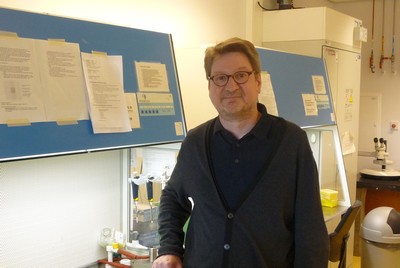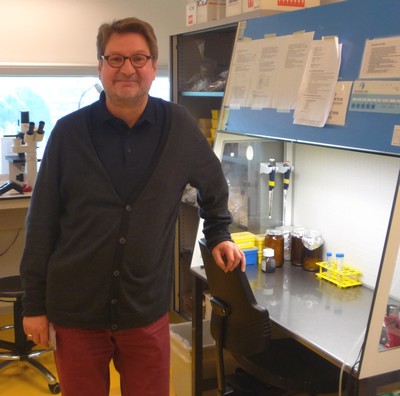New impetus for treatment neurodegenerative diseases
Twenty years ago, tumor necrosis factor (TNF) seemed a promising target in the treatment of brain diseases like multiple sclerosis or Alzheimer’s Disease. But clinical trials produced disappointing results. Now University of Groningen scientists and a group of European colleagues have made an important discovery that explains the failure of these trials, and points the way to promising new treatments. The results were published on 10 October in Proceedings of the National Academy of Sciences.

Despite its name, tumor necrosis factor (TNF) is not just a factor in cancer. ‘It is a master switch in the immune response’, explains University of Groningen neuroscientist Ulrich Eisel. It may induce fever to help the body fight infection, but if things get bad, it can also trigger a suicide programme in cells. ‘In the 1980s, it was discovered that in many neurodegenerative diseases it is TNF that makes the neurons die’, says Eisel.
So it seemed like a good idea to treat diseases like multiple sclerosis (MS) or Alzheimer’s with TNF inhibitors. ‘A large clinical trial with MS patients began some twenty years ago, but the results were a disaster: the patients’ symptoms actually got worse.’ The big question was: what went wrong?
Mouse model
Eisel was part of a consortium that discovered that TNF can activate two different receptors on cells: TNFR1 and TNFR2. ‘What we found was that they have opposing functions. Triggering TNFR1 induces cell death, while triggering TNFR2 prevents it.’ Furthermore, there are two types of TNF: a soluble form, which activates only TNFR1, and a membrane bound form, which activates both receptors.

The next step was to see if this explained the disappointing results of the MS trial. Over the last few years, specific agonists and antagonists have been developed for the TNF receptors. In the PNAS study, these were tested in a mouse model for MS. ‘We first had to humanize the TNF receptors in the mice, as the compounds we tested are specific to human receptors.’ They induced an experimental form of MS in the mice, and treated them with either an antagonist (blocker) for TNFR1 or an agonist (stimulator) for TNFR2.
The results were convincing: blocking TNFR1 or stimulating TNFR2 ameliorated the MS symptoms. ‘We used a test which was developed in Groningen to measure memory function and saw a positive effect.’ Furthermore, if both TNFR2 and TNFR1 (which should protect neurons from dying) were blocked, neurons still died. ‘It appears that the protective effect of an activated TNFR2 is vital for the survival of neurons.’

Treatment
This explains why the trials in which both TNF receptors were blocked failed so miserably. And it also points the way to new forms of treatment. A specific TNFR2 agonist could prevent cell death in neurodegenerative disease. ‘We are now starting more trials in mouse models of MS.’ MS also affects peripheral tissue. ‘This is easier to target. If you want to protect neurons in the brain, in Alzheimer’s for example, the agonist must cross the blood-brain barrier.’ This is notoriously difficult. ‘But we are working on a Deltaplan Memorabel project funded by ZonMw, the Netherlands Organization for Health Research and Development, to develop nanoparticles that help medication cross the blood-brain barrier.’
Reference: Yun Dong et al: Essential protective role of tumor necrosis factor receptor 2 in neurodegeneration. PNAS Early Edition 10 October 2016 DOI: 10.1073/pnas.1605195113
| Last modified: | 06 December 2016 3.30 p.m. |
More news
-
16 April 2024
UG signs Barcelona Declaration on Open Research Information
In a significant stride toward advancing responsible research assessment and open science, the University of Groningen has officially signed the Barcelona Declaration on Open Research Information.
-
02 April 2024
Flying on wood dust
Every two weeks, UG Makers puts the spotlight on a researcher who has created something tangible, ranging from homemade measuring equipment for academic research to small or larger products that can change our daily lives. That is how UG...
-
18 March 2024
VentureLab North helps researchers to develop succesful startups
It has happened to many researchers. While working, you suddenly ask yourself: would this not be incredibly useful for people outside of my own research discipline? There are many ways to share the results of your research. For example, think of a...

